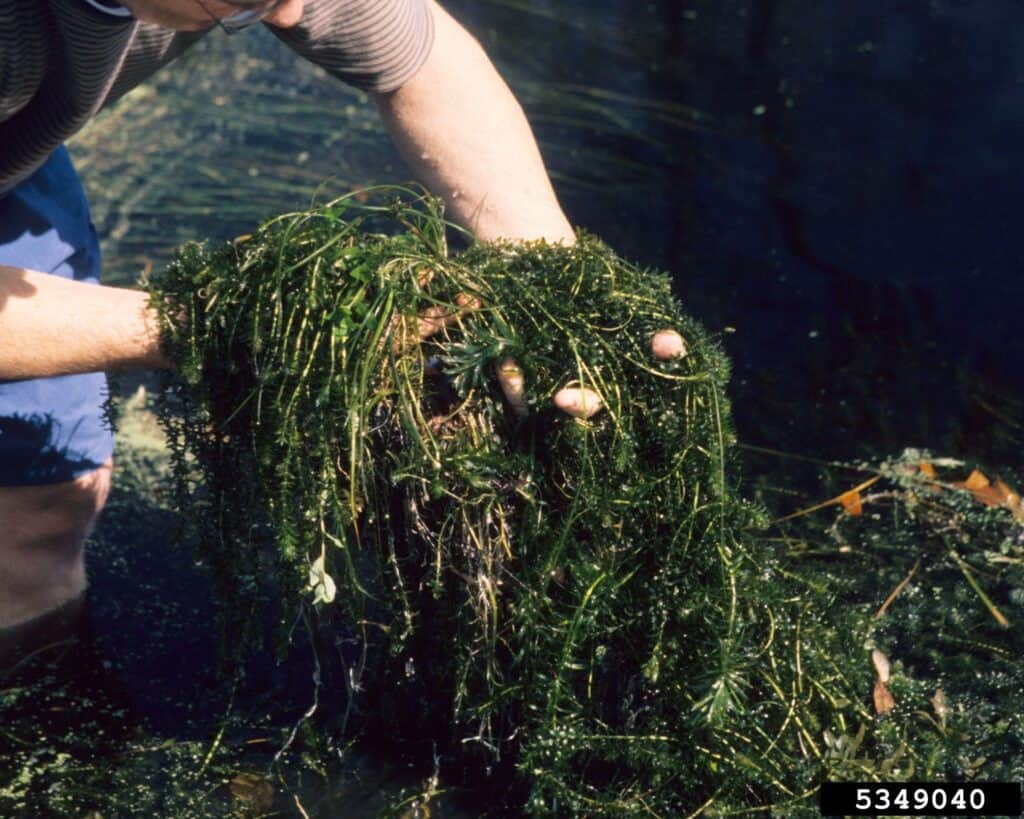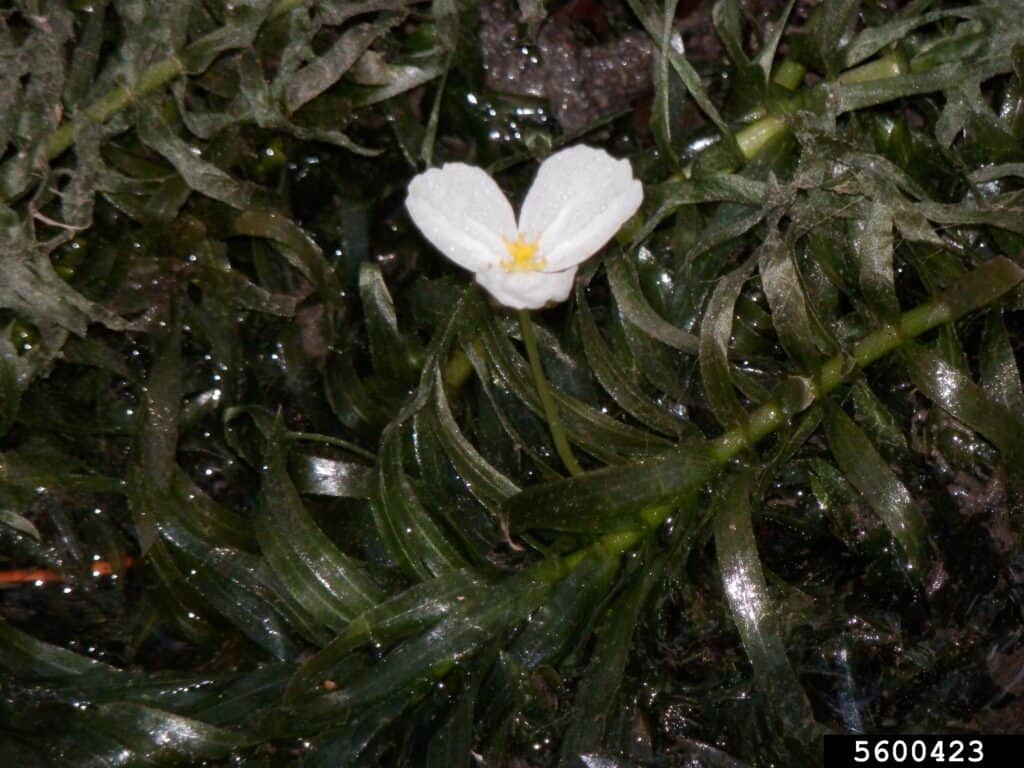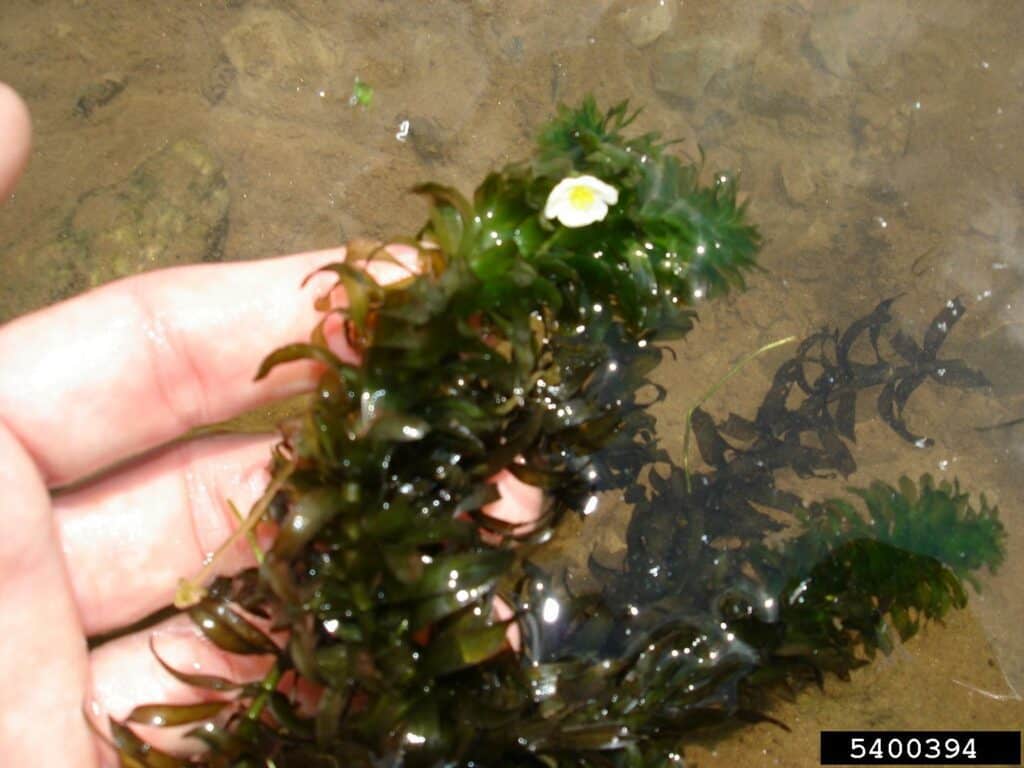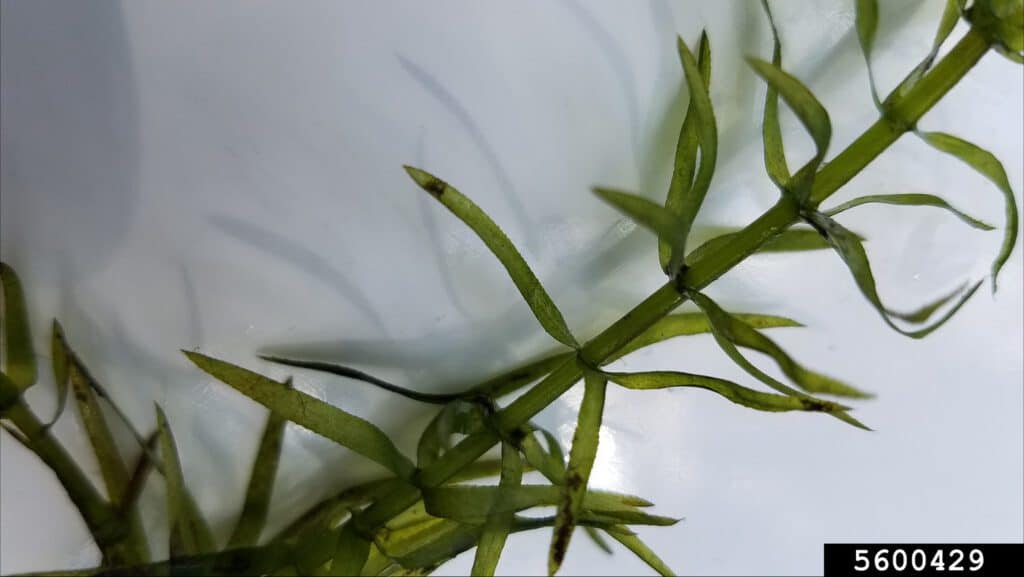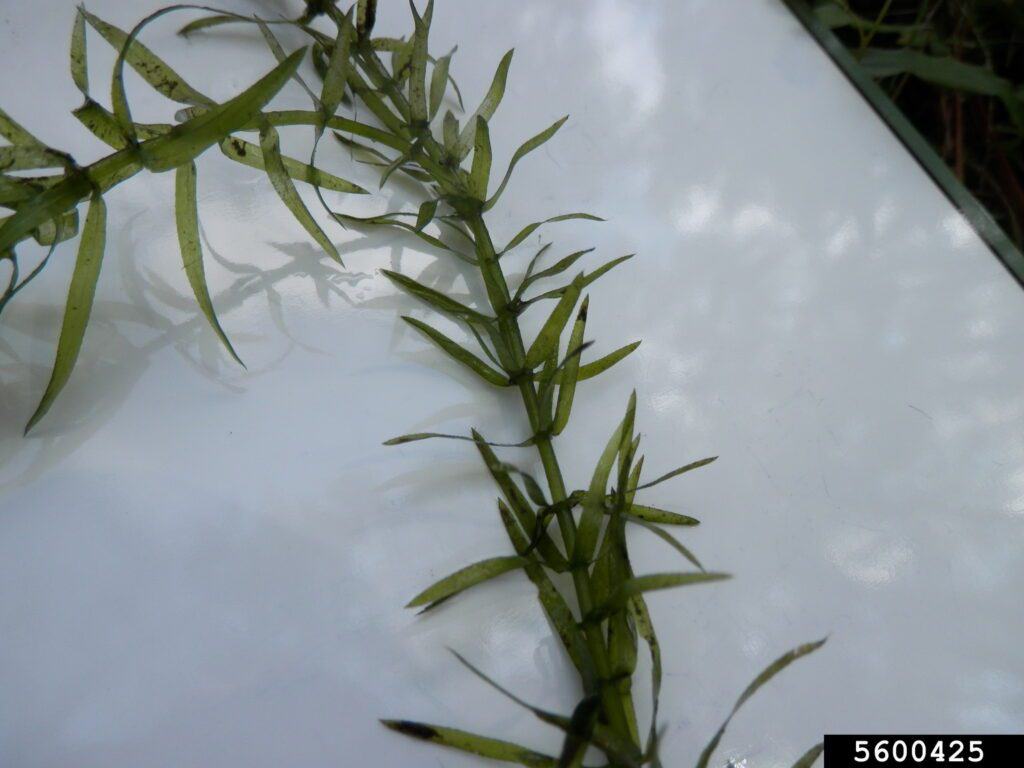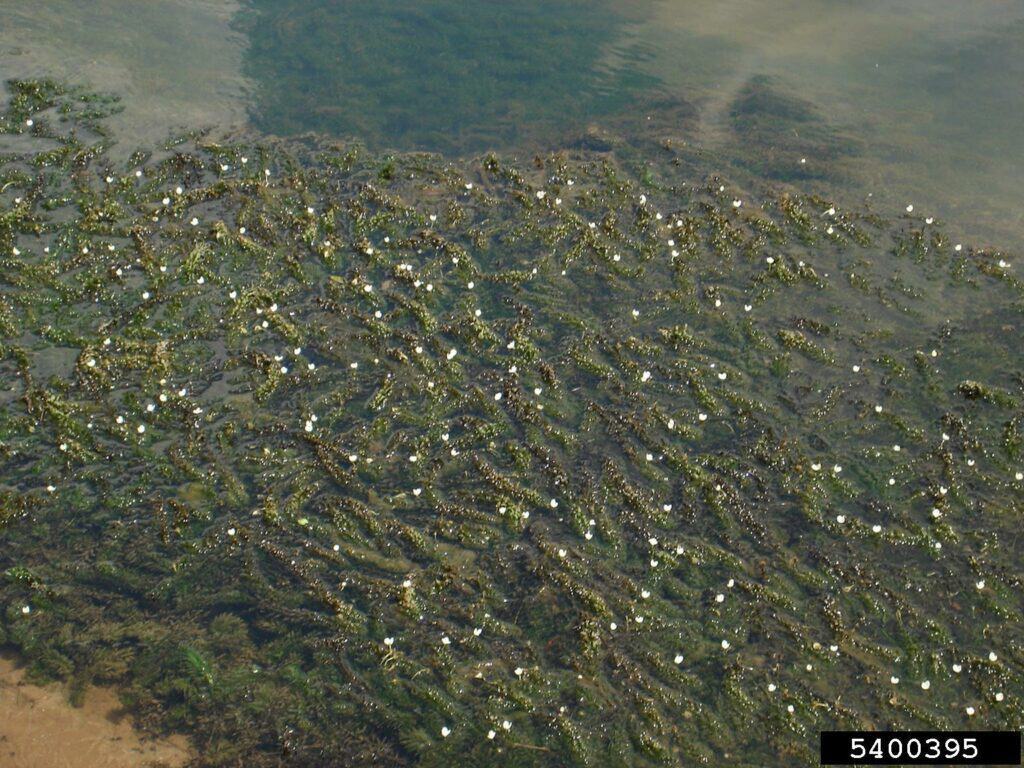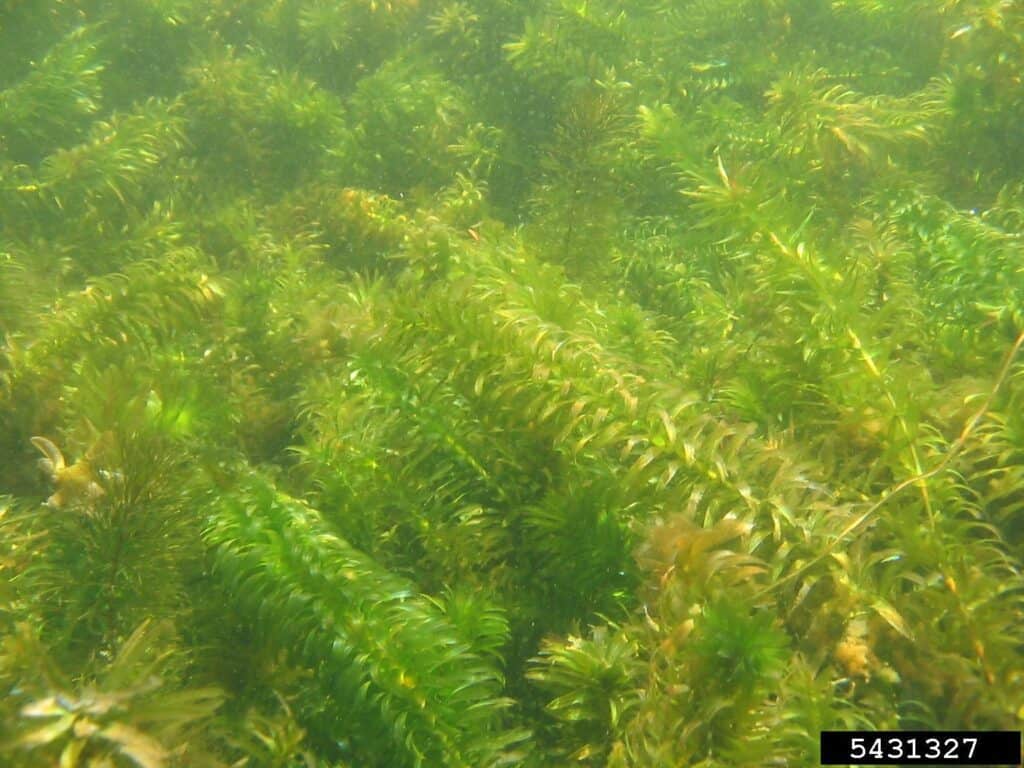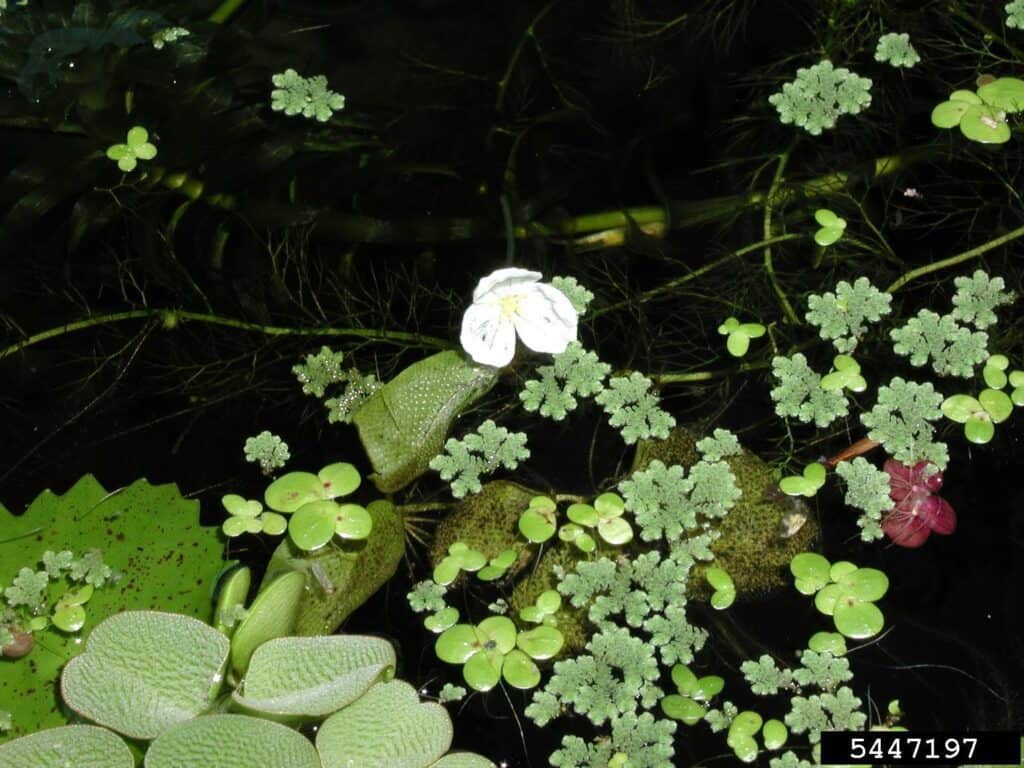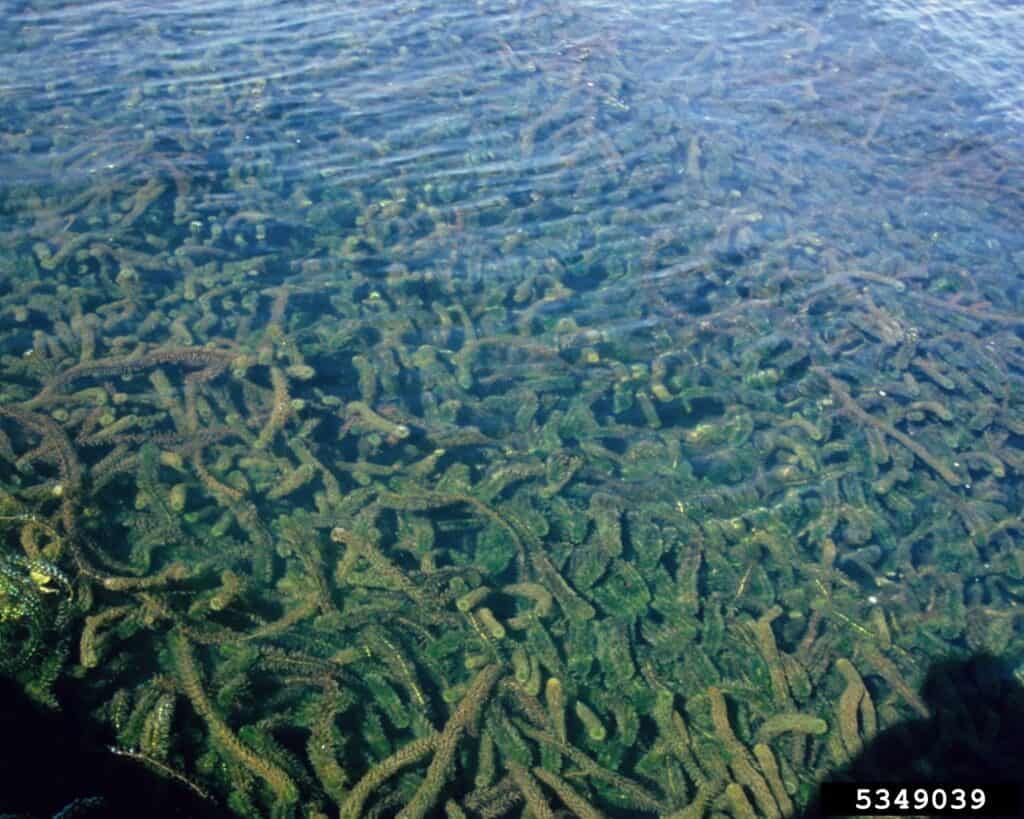*Not detected in Michigan*
Report this species to:
EGLE Aquatic Invasive Species Program EGLE-WRD-ANC@michigan.gov.
If possible, please take one or more photos of the invasive species you are reporting. Also make note of the location, date and time of the observation. This will aid in verification of your report. You may be asked to provide your name and contact information if follow-up is needed.
– Or – Use the Midwest Invasive Species Information Network (MISIN) online reporting tool
– Or – download the MISIN smartphone app and report from your phone – MISIN.MSU.edu/tools/apps/#home
Identification:
- Bushy aquatic plant with dense whorls of bright green leaves.
- Generally 4 leaves per whorl.
- White, 3-petaled blooms float on the surface of the water.
- Can grow up to 18 feet to water surface.
- Easily confused with Hydrilla (another invasive) – Brazilian elodea leaves are smooth to the touch.
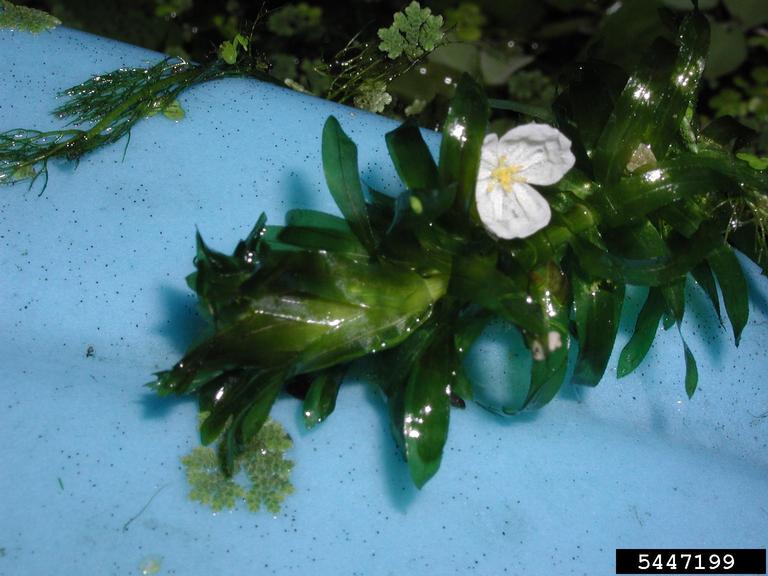
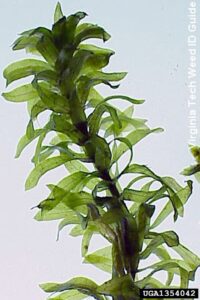
Habitat: This submerged perennial can survive rooted or free floating in freshwater depths up to 20 feet. Brazilian elodea can be found in ponds, lakes and sluggish rivers and streams.
Native Range: South America.
U.S. Distribution: Brazilian elodea has been reported down the west coast and in the southeast from Texas up to Vermont and New Hampshire.
Local Concern: Rapid growth leads to dense, monospecific mats on the surface of the water. These mats crowd out native aquatic plant species, provide poor habitat for fish and impede boat movement and other recreational activities.
Other Common Names: Brazilian waterweed, dense waterweed, leafy elodea.
MORE INFORMATION
MDARD Weed Risk Assessment for Brazilian Elodea (Egeria densa) – This document evaluates the invasive potential of the plant species using information based on establishment, spread and potential to cause harm.
Credits:
Brazilian elodea. (n.d.). Retrieved March 14, 2023, from https://www.michigan.gov/invasives/id-report/plants/aquatic/brazilian-elodea
